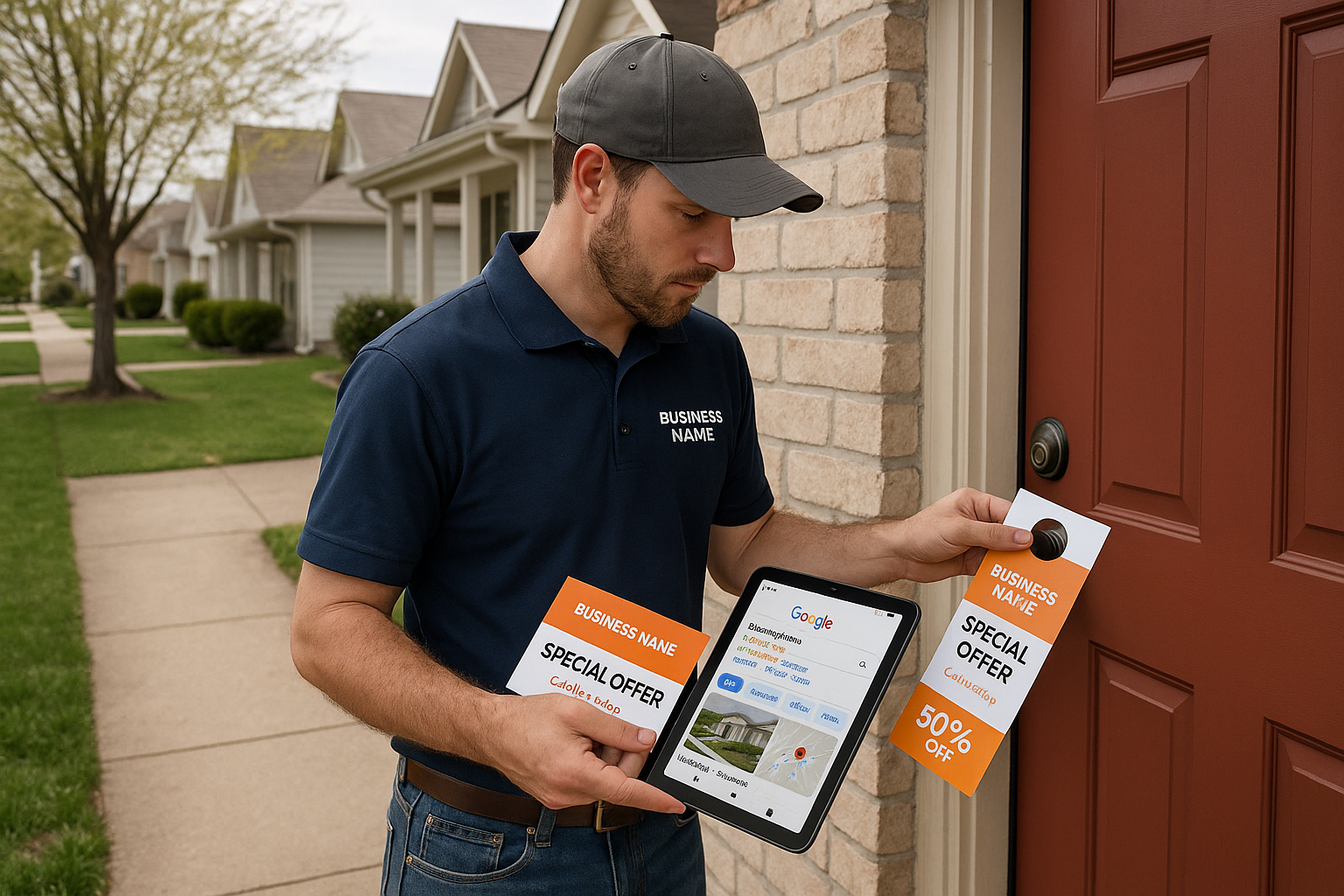You want the Map Pack. You want it bad. Yet your Google Business Profile looks jittery, your Yelp listing points to an old number, and Apple Maps thinks you live in a strip mall that was bulldozed in 2019. Mixed signals crush trust. Google sees that wobble. Real customers see it too. They bail. In this playbook I will show you how to lock your Name Address Phone into one clean version, find and fix bad citations, purge duplicates, pick directories that move the needle, and keep everything clean with a no nonsense monthly routine. It is part technical, part detective work, and a little therapy for your brand. Let us get you visible, credible, and clickable.
What local citations are
Local citations are online mentions of your business Name Address Phone. Think structured listings like Google Business Profile, Apple Maps, Bing Places, Yelp, Facebook, plus industry directories. Think unstructured mentions on news sites, blogs, local chambers, or social profiles. Consistent citations help search engines verify that your business exists and is legitimate. That supports local rankings and drives real foot traffic. For a clear definition with examples, see the Ahrefs overview on citations at Ahrefs.
Citations do two jobs. They confirm the facts. They distribute those facts where real users search. Messy citations break both jobs. That hurts clicks, calls, and conversions. Your brand needs one clean version of truth spread everywhere.
If you want a deeper foundation around local ranking fundamentals with common NAP mistakes, walk through our training on NAP consistency across the web. Use it as your cross check while you read this playbook.
Why NAP consistency drives the Map Pack
Google calls the core factors relevance, distance, and prominence. That comes straight from their guidance on local ranking at Google Support. Complete and accurate Business Profile info helps relevance. Trusted signals like links and reviews feed prominence. Your address also ties to distance. One messy NAP can confuse all three at once.
The consumer side hurts even more. BrightLocal found most people lose trust when they see wrong details. Their research shows that inconsistent or incorrect listings turn away a large chunk of buyers. Search Engine Land reported that 63 percent would be deterred by inaccurate listing info. You can see that summary at Search Engine Land. That is not a small dent. That is a sales leak you can fix this month.
Where do citations sit in the bigger playbook. Whitespark’s Local Search Ranking Factors survey places citations as foundational. Not the only lever. Still essential. You can read the latest public breakdown at Whitespark with coverage at Search Engine Land. Think of citations as your ID card. Your Business Profile, on page content, links, reviews, and behavior signals do the heavy lifting once that ID checks out.
Authority still wins in competitive niches. Local backlinks from trusted sites push your prominence up. When you finish this audit, start stacking relevant links. I laid out a plan for that in our guide to local backlinks and authority. Clean NAP plus earned links gives you staying power.
Local citation audit plan
You will lock down a single version of Name Address Phone. Then you will hunt errors. Then duplicates. Then rebuild the high value listings you lack. Finish by reinforcing your own website. Work section by section. Do not rush. Precision beats speed.
Inventory and baseline
Create a master record first. One business name. One USPS standardized address. One primary local number. One website URL. Save it in a shared document. This record is your truth source for every future change. Use USPS Publication 28 for exact abbreviations. Street becomes ST. Avenue becomes AVE. Suite becomes STE. That standard reduces mismatches across data sources. You can reference the rules at USPS Publication 28 and the abbreviation chart at USPS Abbreviations.
Next, pull your current listings. Two solid tools do this well. BrightLocal Citation Tracker scans key directories, flags inconsistencies, and highlights duplicates. Read their workflow at BrightLocal Citation Tracker. Whitespark Local Citation Finder excels at competitor gap discovery and sorts opportunities by how easy they are to submit. See the tool at Whitespark Local Citation Finder.
Export results. Label each listing as correct, incorrect, duplicate, or missing. Keep a column for login ownership. Keep a column for notes and proof. Screenshots help when platforms misfire or revert data.
Canonicalize your NAP
Set the same spelling and punctuation everywhere. No cute nicknames for the business. No extra keywords in the name field. Use the real world name as customers see it. Google’s naming and address rules live at Guidelines for representing your business. Break those rules and you risk suppression or an outright suspension.
Update these locations first. Your Google Business Profile. Your website footer and contact page. Apple Maps via Apple Business Connect. Bing Places. Yelp. Facebook. These listings act as primary validators. Once the core set matches, work through the rest of your directory list with that exact same structure.
Adopt one suite format. Adopt one phone number. Adopt one website URL for the primary listing. That consistency lets aggregators and data partners pick up the right record quickly.
Fix mismatches and remove duplicates
Spot the worst offenders first. The wrong phone number on Yelp hurts calls today. A duplicate listing on Apple Maps splits your ranking power. A stale Bing page with an old location confuses everything. Prioritize based on visibility and how wrong the data is.
Handle platform fixes directly.
- Google Business Profile. If you see a duplicate on Maps, use Suggest an edit to mark a location as a duplicate or closed. If that fails, contact support through your Business Profile dashboard. Keep proof ready. Back up your edits with photos of signage or utility bills if they push back. See Google’s guidance on improvement at Tips to improve local ranking.
- Yelp. Open the other page, click Edit, pick Duplicate, and submit with context. Yelp explains the process at Yelp duplicate reporting.
- Bing Places. Search for your business, open the duplicate, and use the Feedback option or close the record from your dashboard after claiming. Steps live at Bing Places duplicate guidance.
- Apple Business Connect. Claim your location, then remove or merge the extra record. You can also report an issue if you cannot claim it. Instructions are at Apple Business Connect help.
Move through the rest of your list in descending order of authority and usage. Correct the name to match your canonical name. Correct address format to USPS style. Correct phone number to your primary local number. Fill missing categories, hours, and URLs while you are there. Keep notes with date and action taken. That log saves time the next time a platform tries to pull you back to bad data.
Rebuild on the right sites
Quality wins. Spray and pray listing blasts leave you with weak sites and little referral traffic. Focus on sources that users trust and that other platforms cite.
Start with the power players. Google Business Profile, Apple Maps, Bing Places, Yelp, Facebook. These typically show first in branded searches. Many aggregators also consume their data. If you need a quick short list that agencies rely on, BrightLocal publishes their core build list at BrightLocal.
Then add country specific and industry specific sites. Whitespark maintains a list of top sources by country with data on usage and submission details. See it at Whitespark top sources. For niche lists by industry, BrightLocal has curated pages that cover lawyers, dentists, home services, restaurants, and more. Browse sectors at BrightLocal industry lists.
Data aggregators still matter. In the US, Data Axle, Neustar Localeze, and Foursquare distribute your details to many apps and maps. They speed up propagation. That reduces drift over time. Read the current aggregator overview at BrightLocal on aggregators.
Fill each new listing with consistent NAP, real categories, service descriptions, a short About section, hours, and photos. Use the same brand tone across profiles. Do not keyword stuff the name field. That breaks Google rules. It also looks shady.
On site reinforcements
Your site is the anchor that all citations point to. Place your canonical NAP in the footer. Mirror it on your contact page. Match hours with your Business Profile and your top directories. That match gives Google and users a single truth source.
Add LocalBusiness structured data in JSON LD. Google documents the setup at Search Central. Include at least these properties. name. url. telephone. address with streetAddress, addressLocality, addressRegion, postalCode, addressCountry. openingHours. geo if you have it. sameAs for your top profiles. priceRange if relevant. The values must match your canonical NAP.
Map this work to your service and city pages with real query intent. If you need a quick method, use our guide on local keyword strategy. Clean citations plus targeted pages equals better results for both discovery and conversions.
Choose directories wisely
Not every directory deserves your time. Pick with intent. Ask five questions before you invest effort.
Does it fit your business type. If you run a dental practice, DentalPlans or Healthgrades matters more than a general site no one reads. BrightLocal’s industry lists help you spot the right niche sources at BrightLocal industries.
Does the site carry authority or distribute data to others. Whitespark breaks down the strength and reach of top sources by country. You can review that at Whitespark. Prioritize those with strong usage or feeds into other platforms.
Can you control edits. Some sites require phone or postcard verification. Some let you claim a listing and lock it down. Favor sources where you have control. Ownership prevents reversion to old details.
Will the listing ever send referral traffic. A directory that ranks for your brand or your service tends to matter more. Run a quick search for your primary service plus city. If the directory holds page one for that query, it is a keeper.
Do you already have coverage through aggregators. Submissions to Data Axle, Neustar Localeze, and Foursquare help distribute the right record. You still need direct claims for top sites. Aggregators are not a silver bullet. They do speed up cleanup.
When in doubt, pick fewer high quality listings and invest in better content there. Add fresh photos. Add products. Add services. Add menus. Add attributes like wheelchair access or parking. Richer profiles convert better and build trust.
Tools that save time
Do not juggle five citation platforms at once. Signals collide. Pick one primary tool for audits and monitoring. Keep the rest for spot checks or special use cases.
BrightLocal Citation Tracker gives you a clean picture of your NAP footprint. It finds existing listings. It flags errors. It surfaces duplicates. It also shows competitor citations so you spot gaps fast. The reporting is clean. See the breakdown at BrightLocal Citation Tracker.
Whitespark Local Citation Finder excels at competitor driven discovery. You plug in a keyword and market. It returns the citations that rank leaders hold. It also marks which sites accept submissions. This removes guesswork during prospecting. Check it out at Whitespark.
If you want centralized syncing for many directories through one feed, Semrush Listing Management can help. It pushes updates and suppresses some duplicates. Use it carefully. If you use more than one sync tool at the same time, edits can clash. Keep one system in charge while you handle the few key sites that still require direct native edits.
Monthly maintenance checklist
Citations are not set and forget. Data drifts. Aggregators import stale sources. Users suggest edits on Maps that look right at a glance but are wrong in real life. A short monthly routine keeps you clean.
Check your Google Business Profile weekly. Google can apply updates from third party sources. You can accept or decline those changes in your dashboard. Read the process at Manage Google updates. Confirm hours and holiday hours. Confirm services and categories. Upload fresh photos. Add a quick post for seasonal promos or public notes.
Reviews matter for visibility and click through. Whitespark points to review recency as a key advantage in local search. A steady stream of new reviews supports rankings. Their analysis is posted at Whitespark review recency. Ask customers each week. Reply to every review with a short human response. That shows real service. It also signals activity.
Spot check your top citations. Apple Maps. Bing Places. Yelp. Facebook. Compare each one to your canonical NAP. Fix drift on the spot. Then run a quick audit with your primary tool once a month to catch new issues. BrightLocal’s Citation Tracker is built for that exact rhythm at BrightLocal.
Tune your site during the same session. Confirm your footer NAP still matches. Confirm your contact page still matches. Confirm your LocalBusiness schema still matches. Add new photos on the contact page if your storefront changed. Small updates tell search engines you are current.
Accuracy helps voice and AI answers. Smart assistants need the right hours and phone number to route calls and directions. We cover that topic in our voice guide at keep hours accurate everywhere. Do not let Siri send customers to a locked door at 6pm. That burns trust fast.
Keep a simple log in a spreadsheet. Track each edit with a date and a quick note. Save screenshots for big changes. That log becomes proof when a platform reverts data or when you hand off work to a new staff member.
Local citation FAQs
What is NAP in local SEO
NAP stands for Name Address Phone. A citation is any public mention of those details. Citations show up on directories and on unstructured pages like news sites or social profiles. Consistency helps Google verify that your business exists with the same identity in many places. See the primer at Ahrefs.
Do citations still matter in 2025
Yes. They remain a base layer for local search, although they do not win the game alone. Whitespark’s survey of local experts places citations as foundational alongside Business Profile work, on page content, links, and reviews. Read the survey and coverage at Whitespark and Search Engine Land.
How many citations do I need
No magic number. Benchmark against the top three competitors in your city. BrightLocal’s research shows higher ranking businesses tend to have more citations. Correlation does not prove cause. Quality and accuracy beat raw volume. Read the study at BrightLocal.
Which directories should I start with
Start with Google Business Profile, Apple Maps, Bing Places, Yelp, and Facebook. Then add the most trusted country sources from Whitespark and the best industry directories from BrightLocal. Submit to Data Axle, Neustar Localeze, and Foursquare for distribution at scale.
How do I remove duplicate listings
Use each platform’s native process. On Google Maps, Suggest an edit for duplicate or contact support through your dashboard. For Yelp, open the listing and submit Duplicate via the Edit link at Yelp’s help page. For Bing Places, claim then close or use Feedback at Bing. For Apple Maps, remove or merge inside Apple Business Connect at Apple support. Keep notes and screenshots for each action.
Should my site include LocalBusiness schema
Yes. Add LocalBusiness JSON LD that mirrors your canonical Name Address Phone, hours, and URL. Google covers the required and recommended properties at Search Central. That data helps search engines understand and confirm your business details.
How should I format my address to avoid mismatches
Adopt USPS Publication 28 formatting as your single standard. Use ST, AVE, BLVD, and STE. Use the same version everywhere. You will prevent duplicate records that arise from small differences. The USPS docs are at USPS Publication 28 and the abbreviation list at USPS Abbreviations.
Do not do these NAP sins
Do not stuff keywords into your business name. That breaks Google rules. You risk a suspension. Read the official guidelines at Google Support.
Do not run multiple profiles for one location. Use one profile per real location. Service area businesses should follow Google’s address rules. No fake offices. No co working with no signage just to gain coverage. That strategy backfires.
Do not add tracking numbers randomly. If you use a call tracking number, make it your primary in your Business Profile with your main number as an additional number. Keep the rest of your citations on the main local number. Consistency first.
Do not change address format every quarter. Commit to USPS style everywhere. Small spelling differences create a new record on some platforms. That splits authority. That hurts rankings.
Proof points you can use
Google states that complete and accurate Business Profile info improves local results. That is in their local ranking guidance at Google Support.
BrightLocal’s Trust research shows that people lose confidence when they meet inconsistent details. Search Engine Land reported 63 percent deterred by inaccurate listings. See the summary at Search Engine Land.
BrightLocal also found that top ranking businesses tend to hold more citations than low ranking peers. It is a correlation. Use it as a directional guide, not a rule of nature. The study lives at BrightLocal.
Whitespark’s ranking factor survey puts citations in the base layer. They pair with Business Profile work, on page content, links, and reviews for the full effect. Get the latest public edition at Whitespark.
A practical one time audit checklist
Decide your canonical NAP. Use USPS Publication 28 for standard abbreviations at USPS. Lock this in a short style guide that lives with your team.
Update your Google Business Profile to match the real world name with no extra keywords. Confirm address and phone. Categories too. Review Google’s rules at Guidelines.
Run a citation audit with BrightLocal or Whitespark. Export the list. Label each result by status. BrightLocal is at Citation Tracker. Whitespark is at Local Citation Finder.
Fix core listings first. Apple Business Connect. Bing Places. Yelp. Facebook. Use each platform’s official process for edits and duplicates. Apple support at Apple. Bing help at Bing. Yelp duplicate reporting at Yelp.
Submit to the big three aggregators in the US. Data Axle. Neustar Localeze. Foursquare. They help spread corrected data faster. Learn the flow at BrightLocal.
Add LocalBusiness structured data. Place the same Name Address Phone in your footer and contact page. Use Google’s documentation at Search Central.
Keep it clean over time
Local search is a live system. Data changes. Competing edits slip in. Your staff publishes a new phone number on the contact page by mistake. That change spreads. Catch drift fast with a simple routine.
Every week, check your Google Business Profile for suggested edits in the Updates section. Accept correct changes. Reject the rest. Keep categories clean. Confirm hours during holidays.
Every month, run a fresh citation audit with your chosen tool. Fix mismatches. Close new duplicates. Check Apple Maps, Bing, Yelp, and Facebook manually as well. It takes minutes. It stops tiny errors before they grow.
Ask for reviews on a steady schedule. Whitespark shows that review recency influences local results. Keep a flow of fresh reviews to support both rankings and conversions. Respond to each one like a human. Short. Helpful. Gracious when it is praise. Calm when it is not.
Keep an internal log for all listing edits and claims. Dates. URLs. What changed. Who changed it. Store screenshots. That file saves time during staff turnover or after an ownership change.
Real world examples of NAP wins
A home services company had four address versions across major directories. ST on Google. Street on Yelp. Suite on Bing. STE on Apple. After standardizing to USPS style and closing two duplicate Yelp pages, they picked up an extra call per day from Maps within two weeks. Nothing else changed during that period. That is the effect consistency can have on user actions.
A dental clinic used a different tracking number across eight long tail directories. Call routing worked, yet some platforms treated the number as a second business. After switching all listings back to the main local number, the clinic saw a lift in branded impressions on Maps and a small uptick in direct calls from Apple Maps. Consistency matters at the phone number level too.
A restaurant kept outdated hours on Facebook. Voice assistants used that page for answers. Customers arrived to a locked door. Reviews took a hit. After syncing hours across GBP, Facebook, and Apple Business Connect, voice requests served correct times. Review sentiment recovered. One missed hour entry caused a very real revenue leak. Keep your hours clean everywhere or it costs you.
The bigger picture for local growth
Citations set the table. Your Business Profile, on page content, local links, and review strategy deliver the meal. You need both. After you complete your local citation audit, move your focus to building authority in your city. Partner with local groups. Sponsor meetups. Pitch helpful stories to local media. Gather links with context, not fluff. Our guide to local backlinks and authority shows practical ways to do that without gimmicks.
Match that push with smart topic coverage on your site. Service pages for each offer. City pages for priority markets with real substance. Answers to customer questions on a simple FAQ page. Our local keyword strategy article will help you map queries to the right pages so incoming traffic turns into calls and bookings.
Quick wins you can tackle today
Claim and clean your Google Business Profile. Fill every field you can. Use real categories. Write a plain language description with your prime service and city.
Set your canonical NAP in a shared document. Use USPS Publication 28 for standard abbreviations. Post that doc inside your team workspace. Tell everyone to use that exact version in every place forever.
Fix the top four directories. Apple Maps. Bing Places. Yelp. Facebook. Correct the name, address, phone, and hours. Add at least three current photos to each profile.
Submit to Data Axle, Neustar Localeze, and Foursquare. That speeds up correction across many smaller sites. It also reduces future drift.
Add LocalBusiness schema to your site. Place the same NAP in your footer and contact page. Match hours across all your public profiles the same day.
What success looks like
Brand searches show one clean set of details across page one. Maps exposes your correct hours, phone, and a link that actually routes to the right page. You see fewer wrong number calls. You see fewer messages asking if you moved two years ago. Reviews edge up as real customers reach you on the first try.
In the Map Pack, you hold steady for core services. Your profile shows consistent photos and recent reviews. You post updates once or twice a month. Each quarter, your citation report shows fewer new errors. That is control. That is how you compound results.
The short pitch from Rep Lock Marketing
We build brands that do not flinch under pressure. Clean NAP. Correct citations. Better links. Smarter pages. If you want a partner to run the audit and manage the monthly grind, Rep Lock Marketing can do that with speed and care. If you prefer to run it in house, use this playbook, then come back when you want to scale link building or content. Either way, you win. Your customers find you. You stay in the Map Pack longer. That is the goal.
Final thought. You do not need 500 citations. You need the right ones. You do not need fancy hacks. You need clean data everywhere real people search. Nail that. Build authority. Keep your details current. The rest follows.






